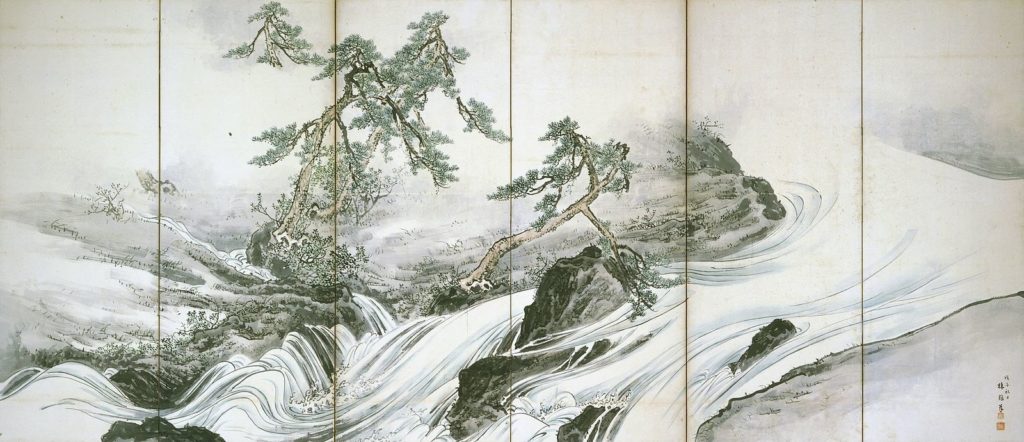
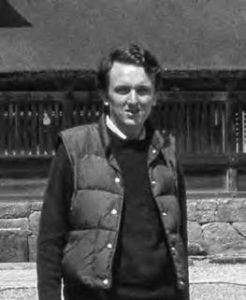
Source: Photo courtesy of the author.
In the mountains above the town of Chitose flowed a narrow stream. Clear, cold water zigzagged around trees and tumbled wildly over rocks before finally being corralled into cement-lined troughs that directed the water to the valley below, where it filled the rice paddies and then spilled into the Hozu River, and, flowing wild again, cascaded through the rocky gorge and into the city of Kyoto.
A short hike up the mountain from my house on the edge of the paddies, the water tumbled over a twenty-foot drop into a rock-lined pool that was perfect for swimming. The drought that summer of 1978 had diminished the waterfall, but its cool water still overflowed the banks of the pool.
During the hot July days, neighborhood children climbed up the steep path for a swim at the foot of the waterfall. A few of them enjoyed diving from the top of the falls, an activity that brought warnings from mothers who occasionally showed up to check on things. The less courageous sat on the edge and received a shoulder massage from the falling water.
One afternoon, after hiking up to the falls, I was surprised to find that a thick layer of rock filled the once-deep pool. Diving was now out of the question, and walking home after my swim, I began to wonder whether it was safe to swim at all. My only explanation for the appearance of the rocks was that they had been washed over the falls in a flash flood, even though this was unlikely, given that it hadn’t rained for weeks.
I arrived in the village, still searching for an explanation. Turning toward home, I passed the town hall, the largest of a dozen or so wooden buildings that made up the village center, and noticed a group of men sitting on the steps drinking sake. Their red faces and exaggerated gestures revealed that they had been at it for a while. I waved and continued on, not realizing that the answer to the puzzle of the rocks lay in that gathering. What I did know was that the local men had spent the day working in the mountains as they did every month, clearing the hiking trails that cut through the dense mountain foliage or tending to the trees that they had planted on the hillside.
I learned of the villagers’ recent activity that evening when my landlord stopped by my house on his way home from the town hall. These unannounced visits were common, especially when he had been drinking. I was never certain whether he wanted to visit with me or to sober up a little before returning home to his family.
His entrance was typical: a sharp knock, quick turn of the latch, and a spirited greeting. Konbanwa! He was in front of me before I could invite him in. The afternoon sake had loosened his tongue, and he flipped into a form of local dialect that he typically avoided when speaking with me. I listened intently, noticing the quirky pronunciations and contractions, and trying to insert my own aizuchi interjections to show him that I was paying attention.
My interest quickened when he told me that the village men had been clearing rocks from the stream that day and lugging them to the swimming hole. I had the answer to my question, but wanted to know more. Clearing the river to direct water to the rice paddies made sense, but putting rocks in the pool below the falls seemed futile. The rocks displaced a small amount of water and sent it down the stream, but, considering how little water flowed over the falls in the recent drought, their efforts struck me as useless.
Shintō gods reside in nature. Indeed, they are part of nature itself, contributing to its harmonious workings.
Worried that the next month’s workday would do further damage to the village swimming spot, I decided to push the issue and explain why filling the pool would have almost no effect on the amount of water going to the rice paddies. To my surprise, my landlord defended their efforts.
I countered with an explanation of the physics of the rocks displacing water, but failed to impress him. He kept insisting that their work was worthwhile. Finally, I gave a demonstration with a dishpan, tap water, and some rocks to show him that only a small amount of extra water moved down the hill. He slowly shook his head and told me that I was missing the point.
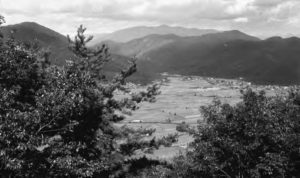
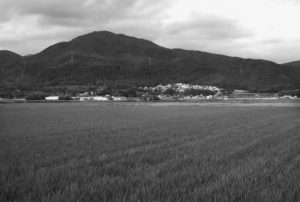
It was here that I realized that he had begun to speak in very deliberate standard Japanese, with gestures and pauses that reminded me of an elementary schoolteacher in front of an uncomprehending student. The amount of water being displaced wasn’t the issue, he said. Their efforts were important because it demonstrated to the gods that the villagers were concerned about the drought. This show of effort and concern, they hoped, would result in the gods making it rain. If it rained, that would make their effort worthwhile. Satisfied that he had made his point, he left for home.
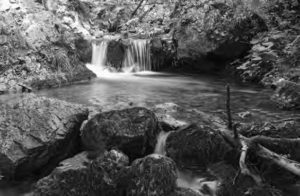
A few days later, my landlord returned with a more philosophical explanation. Shintō gods reside in nature. Indeed, they are part of nature itself, contributing to its harmonious workings. We believe, he continued, that the drought is an imbalance in the natural system that we and the gods share. Knowing that humans play a small part in nature and that the gods assume a larger role, the work crew hoped to enlist divine assistance in ending the drought. They did all that was humanly possible to remedy the situation, fully realizing that filling the swimming hole would have little immediate effect. But if they could inspire the gods by their actions and move them to join forces in their labor, the drought would soon end.
Some days later, the rain came, nurturing the dry rice stalks into producing a respectable harvest. The swimming pool remained shallow. No one dove from the top of the falls. It is probably safer that way.

